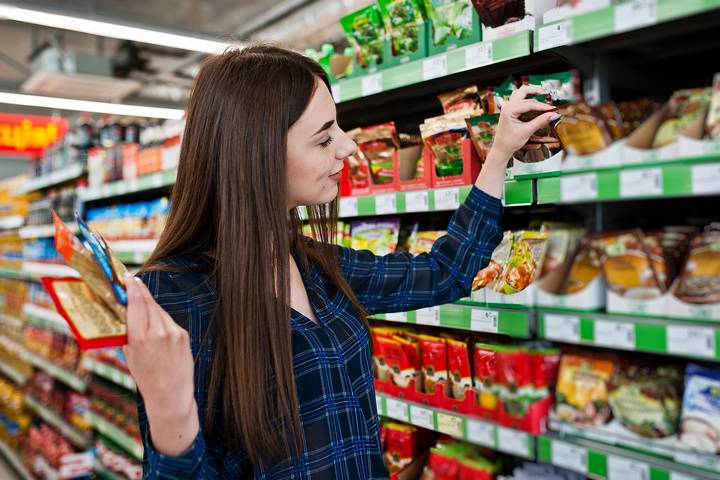What Is Retail Ready Packaging?
Many companies create beautiful packaging to make their products stand out in retail stores. The design process involves meticulous research, ensuring every aspect of the packaging looks perfect. However, you have limited control after transferring your products to a retailer. The merchandiser decides how the items are displayed. Sometimes, the store may place your product packaging in a low-visibility area, decreasing its marketability.
Retail-ready packaging (RRP) is a unique type of product packaging optimized for stores. The packaging is prepared for stocking and can go into store displays quickly. The packaging materials do not require discarding or additional handling. For example, you may find retail-ready packaging in warehousing stores like Costco, which display branded corrugated boxes in the aisles. They are a form of retail-ready packaging.
Retail-ready packaging is sometimes known as shelf-ready packaging (SRP). This packaging type has a high demand among businesses due to the many benefits. The intuitive design gives companies more control over how their products appear in stores. Let’s learn about retail-ready packaging and how it works.
How to Package a Product for Retail

Retail-ready packaging is versatile and comes in various styles. Ideally, the packaging is easy to open, looks attractive, and has a compact design. Accessibility is essential, allowing retailers to display the items quickly. Retail-ready packaging aims to simplify the process of stocking your items. The intuitive packaging design helps merchandisers understand how to promote your products in their stores.
Different retailers may have custom guidelines on what they consider retail-ready packaging. Some stores prioritize stackable designs, allowing them to save precious retail space. Other merchandisers look for simple unpackaging processes. They want to stock the items speedily without the hassle of complex procedures. Research the stores individually to learn their retail display policies. With this knowledge, you can design the product packaging to accommodate the retailers as much as possible.
There are different types of retail-ready packaging, each with unique characteristics:
- Shelf Tray: A shelf tray is a simple container made with corrugated cardboard. Retailers can insert the trays into the shelves for display without taking additional steps. Sometimes, the shelf trays come with a lid to protect the products.
- Reusable Plastic Trays: Some retail-ready packaging uses plastic containers to display the products, especially for food. They work similarly to a plastic pallet. These plastic trays are reusable, making them eco-friendly.
- Merchandising Unit: A merchandising unit is a standalone vertical display, also known as a display stand. It works best when placed at the end of the aisle. This retail-ready packaging catches the customers’ attention and raises brand awareness. Display stands are ideal for seasonal promotions, impulse purchases, or new marketing campaigns.
Benefits of Retail-Ready Packaging

Retailers handle a large inventory of products daily. They only have a limited time to stock the aisles, replenish the items, and adjust the store displays. Complicated packaging causes trouble for merchandisers, who might not understand how to present these products on the sales floor. Retail-ready packaging uses intuitive design elements to make the products accessible. Since the packaging is straightforward, retail managers can quickly adapt the items to the store layouts.
In addition, retail-ready packaging can make your products stand out in stores. The design process involves taking a customer-oriented approach. You carefully consider how every packaging aspect appears in stores and influences potential buyers. You might optimize the sizes, colours, fonts, shapes, and other details to create the most visual appeal. As a result, your retail-ready packaging looks spectacular to customers.
Finally, retail-ready packaging saves costs and improves efficiencies. Retailers require less effort to manage inventory and stock these items, reducing labour expenses. Likewise, the stores can replenish the sold-out items faster. Retail-ready packaging ensures your products appear on store displays with maximum visibility.
Retail-Ready Packaging Trends

Retail-ready packaging is growing increasingly popular. More consumers are moving towards superstores and warehouse clubs, where they can buy items in bulk for a better price. Since these stores must manage extensive inventories, they favour retail-ready packaging for its simplicity and accessibility. Many businesses see the demand and have shifted their packaging designs to accommodate the popular retailers.
Retail-ready packaging complements the minimalist design trends emerging in the industry. Consumers prefer simple and elegant designs that don’t look too busy. They respond well to concise marketing taglines, subtle messages, and soft colour schemes. Companies do not need to use complex materials to design attractive product packaging. They can follow a minimalist theme for their packaging boxes and still create visual interest.
Also, retail-ready packaging is adapting sustainability in the designs. Many eco-friendly retailers want recyclable packaging materials to save excess waste in their stores. Plus, there are economic benefits for businesses to use only essential materials in production processes. As a whole, the packaging industry is shifting towards environmentally friendly practices. The retail-ready packaging market will embrace sustainability in the future.
January 9, 2023
A Guide to Frozen Food Shipping Boxes
September 23, 2022
What Is a Gaylord Box?
May 27, 2022
Can Corrugated Cardboard Boxes Keep Pizza Warm?
April 28, 2022
Why Custom Boxes with Logos Are Important for Branding
April 28, 2022
Can Cardboard Boxes Be Customized?
March 14, 2022
A Guide to Corrugated Boxes for Food Packaging
April 22, 2021
2020 Sales Representative of the Year
January 1, 2021
ML eShop
December 2, 2020
2019 Sales Representative of the Year
March 23, 2020








